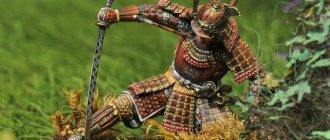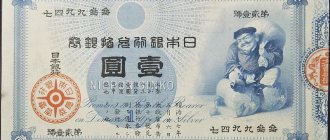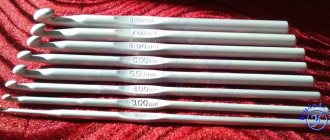Anyone who has ever walked through the center of Tokyo knows firsthand about the special energy of Japanese culture: pragmatic and at the same time dreamy, technical and at the same time endlessly creative, refined and at the same time unusual. And this madness lies at the heart of the nation's fashion industry.
Japanese men's clothing brands are characterized by a wealth of technical expertise and robust design, but also have a touch of fun and a winning desire to push boundaries.
Drawing influence from a variety of international sources - a little Ivy League pomp or Italian understatement, a little Savile Row edge or street hoopla - the Japanese design industry produces truly unique clothing for the modern urban man.
Here are 14 brands worth paying attention to, as well as the items and trends for which they have rightfully earned recognition.
Undercover
The original purveyor of Japanese cool, print-heavy label Undercover was founded in 1993 by then-college student Jun Takahashi. With punk roots and an international outlook, the brand has long combined American and British streetwear with Japanese pop culture imagery to create clothes that are bold and design-forward. Today, he is best known for his sought-after collaborations with major American sportswear icons: Nike sneakers from Undercover usually sell out within minutes.
Companies that have ceased to exist
OHTA JIDOSHA
The company supplied cars to the market for 22 years - in 1935-1957, after which it suddenly unexpectedly left the race. Perhaps it could not withstand the competition of more daring and active competitors.
| Year of foundation | 1922 |
| Founder | Hiro Ota Company |
| Headquarters, offices | Tokyo, Japan |
| Products | Cars |
PRINCE MOTOR COMPANY
Founded as a result of the merger of two aircraft manufacturing enterprises, it existed for 19 years, after which it merged with the Nissan brand in 1966. From that time on, all cars were produced exclusively under this brand.
| Year of foundation | 1947 |
| Founder | Hiro Ota Company |
| Headquarters, offices | Tokyo, Japan |
| Products | Cars |
GORHAM
The automotive industry is a difficult segment in the industry, so many companies simply cannot withstand financial difficulties. This is exactly what happened with GORHAM, which existed for 7 years, releasing only one car model onto the market. In 1922, GORHAM and NISSAN merged.
| Year of foundation | 1915 |
| Founder | William R. Gorham |
| Headquarters, offices | Tokyo, Japan |
| Products | Cars |
As you can see, the vast majority of automotive companies successfully coped with all the difficulties and continued to exist. Moreover, most of them have become world leaders in the production of cars of various classes.
Uniqlo
For the essentials you wear every day, there's no one better than Uniqlo. The genius of this high street company is that the more things change, the more they stay the same - you can walk into any Uniqlo store and find the same elegant classics you first bought ten years ago, alongside a new collaboration or trendy colourway. The brand's shirts are a particularly attractive part of its offering, and when it comes to affordable linen summer styles, there is little competition. And chinos, which can be changed in store the same day, are the basis of many smart casual outfits.
The best Japanese cars by reliability for 2021
Our rating of the best and most reliable Japanese cars is based on data from the Association of Technical Supervision and the Union of Automobile Supervision, which are involved in the technical inspection of cars in Germany, as well as on information collected by the General German Automobile Club, the largest public organization of motorists in Europe. We also used information published by UK companies Warranty Direct and Drive Power. In the United States, Consumer Reports and DJ Power collect data on vehicle reliability. Hopefully, the information provided by all of the above organizations will help car owners figure out which Japanese cars are the most reliable.
Mazda 3, sedan, hatchback
The new Mazda 3 4th generation appeared on the market in 2021. Compared to previous models, the appearance of the car, as well as the equipment itself, has undergone some changes: the design has become more “impressive” and catchy, the hatchback vaguely resembles a modern sports car. Gasoline engine volumes are 1.5, 1.8, 2.0 and 2.5 liters.
Pros:
- Economical fuel consumption – from 4 to 12 liters per 100 km
- Good visibility from the driver's seat
- Spacious interior, good sound insulation
- Modern instrument panel equipment (in particular 8.8-inch display and head-up screen)
- Advanced safety system (traffic jam assist technology, blind spot monitoring system, driver attention monitoring system, airbags, etc.)
Minuses:
- High price (on the secondary market prices start at $25,000)
- Difficulty of maintenance (the presence of high-tech equipment makes the maintenance and repair of the Mazda 3 a very costly undertaking, moreover, not all service centers can provide the required level of maintenance)
- Spare parts and consumables are available upon order.
Toyota Prius, liftback
The 4th generation model differs from its predecessor mainly in changes in the external design and interior equipment of the cabin. In addition, the car's security system has been improved. The new cars are equipped with front-wheel drive, a hybrid system with a 1.8-liter gasoline internal combustion engine. Fuel consumption is 3-5 liters per 100 km (it is important that the car can “consume” AI-92 gasoline).
Pros:
- Economical
- The build quality is excellent. This applies to both the body and chassis
- High performance
- Even in the basic configuration, the car is fully equipped with all the necessary means for a comfortable ride (climate control, multifunction steering wheel, etc.)
- Spacious interior and trunk
- High safety indicators (in particular due to the reinforcement of the car body with elements made of high-strength steel).
Minuses:
- Not the highest quality materials are used for interior decoration
- Expensive repairs
- Inability to carry out repairs and maintenance on your own - it is imperative to contact a specialized service that has modern diagnostic equipment and experienced specialists on staff.
Honda CR-V, crossover
The 5th generation crossover from Honda is a stylish and powerful unit, perfect for Russian roads. Engine capacity – 2.4 liters, petrol. As standard, the crossover is equipped with front-wheel drive, although all-wheel drive (available as an option) makes the car as stable as possible on the road. Fuel consumption is from 8 to 12 liters per 100 km (you can refuel AI-92). A spacious trunk with a volume of 522 liters can easily accommodate all the necessary things for a family trip, and a spacious and comfortable interior will ensure comfort during trips.
Pros:
- In addition to the basic one, the manufacturer offers 4 trim levels to choose from - Elegance, Lifestyle, Executive and Prestige
- Spacious interior and roomy trunk
- Excellent handling and road stability
Minuses:
- High cost of a car even in the basic configuration
- Expensive maintenance (it must be done regularly, according to the manufacturer’s recommendations - at least once a year) and repairs (it is likely that you will have to search for a long time for an experienced technician and a well-equipped service center).
Mazda 2 hatchback
Stylish design and amazing aerodynamics (achieved through smooth, streamlined body shapes) made Mazda 2 one of the most popular cars in Russia. The manufacturer will provide car owners with several configurations to choose from, and even the simplest of them invariably pleases with the presence of a large number of devices that ensure a safe and comfortable ride (electric steering, excellently equipped dashboard, climate control, heated seats, power windows). You can choose from a car with front-wheel drive or all-wheel drive. Engine capacity – 1.3/1.5 l – petrol, 1.4/1.6 l – diesel. Fuel consumption – 5-8 l/100 km. The luggage compartment volume is 250 liters, which is quite optimal for a hatchback.
Pros:
- Economical
- Road stability, maneuverability
- High reliability indicators (in particular, thanks to the advanced security system)
- Ease of maintenance and repair (valid for cars up to 2010)
Minuses:
- The need for regular maintenance
- Not very good sound insulation
- Stiff suspension
Toyota Corolla, sedan
The 12th generation car was first released in 2021. Transmission – CVT or 6-speed manual transmission. The stylish exterior design of the car will not leave indifferent all lovers of representative sedans. Engine capacity – 1.6 liters, power – 122 hp. Fuel consumption per 100 km is 5-9 liters. The maximum speed of the car is 195 km/h, while good dynamics are observed - up to 100 km/h in 10 seconds. The interior equipment is also at its best - the seats are upholstered in leather and fabric, there are heated seats, climate control, electric windows, etc.
Pros:
- Economical fuel consumption
- High reliability indicators (the most modern safety systems along with increased body rigidity)
- Heated windshield
- Electric power steering
- Multi-link suspension
Minuses:
- High price
- The need for regular maintenance
- In the basic configuration, the car’s equipment is quite sparse.
Mitsubishi ASX, crossover
The updated 2021 model amazed car enthusiasts with a completely new exterior design and excellent equipment. There are 2 engine options to choose from – 1.6/2.0 petrol (AI-92 can be used). Transmission - CVT or manual. Drive type - front or full. The car is equipped with independent spring suspension, while the rear one is multi-link. The luggage compartment volume is 440 liters in the standard position and 1200 with the row of rear seats folded. The interior is spacious and comfortable - what else is needed for a pleasant family trip!
Pros:
- Stylish exterior design
- Well-equipped car interior
- Good sound insulation
- Climate control
- Heated seats
- Excellent dynamics
- Electric power steering
Minuses:
- High price of a car
- The need for regular maintenance
- Spare parts and consumables are available upon order.
Mitsubishi Lancer, sedan
Only front-wheel drive cars are supplied to the Russian market, although an all-wheel drive version is also available for other countries. Manufacturers position the car as a sports sedan. Transmission - CVT, robot, manual transmission and automatic transmission. Engine capacity – 1.5/1.6/1.8/2.0 l – petrol. Fuel consumption – 7-11 l/100 km.
Pros:
- High reliability and safety indicators
- Good suspension, resulting in a high level of comfort while driving
- Excellent interior equipment, including the most affordable configuration
Minuses:
- Expensive repairs and maintenance
Subaru Forester, crossover
The crossover appeared on the market in 2021. Compared to the previous 4th generation, the external design has changed significantly and the technical characteristics of the car have been improved. The car is equipped with all-wheel drive, which allows for fairly high handling and road stability. Gearbox – variator. Engine capacity – 2.0 and 2.5 liters, petrol. Fuel consumption – 8-11 l/100 km.
Pros:
- Excellent visibility thanks to large glass area
- The presence of a huge number of additional options (cruise control, climate control, heated seats, rear view camera, etc.)
- Modern security system
Minuses:
- High price
- Expensive maintenance and repairs
- High cost of spare parts and components
Honda Accord, D-class sedan
The cars are equipped with 2.4/3.5 liter petrol engines. There are 2 transmission options available for buyers from Russia – manual transmission and automatic transmission. Fuel consumption – 8-11 l/100 km. Drive – front.
Pros:
- Economical
- Representative appearance
- Excellent interior equipment
- High levels of vehicle safety and reliability
- Availability of several configuration options
- The car's suspension is ideal for Russian roads.
Minuses:
- High cost of the car
- Expensive repairs
Lexus CT200h hatchback
The world's first premium hybrid hatchback. The engine capacity of this front-wheel drive car is 1.8 liters, gasoline, and the gearbox is a CVT. In addition, the Lexus CT200h has very modest fuel consumption - 4-6 l/100 km.
Pros:
- Economical
- Good suspension (independent front, rear - double wishbone)
- Stylish appearance and excellent interior equipment
- Electric power steering
- High levels of safety and reliability
Minuses:
- High price
- Expensive spare parts
- Expensive repairs
Neighborhood
Japanese streetwear collectors love Neighborhood so much that they rarely release it beyond their shores: the brand, which sells luxurious fabrics and bold logos, is notoriously difficult to find outside of Tokyo. But that doesn't mean you shouldn't try. Founded by design icon Shinsuke Takizawa in 1994, Neighborhood has grown into a casual clothing brand that exudes confidence and luxury. His signature monochrome pieces, for example, are often imitated but remain unmatched.
Onitsuka Tiger
Onitsuka Tiger is hailed as the inventor of the first ever running shoe, created to meet the needs of the Tokyo athletic community in 1949. Nike founder Phil Knight was the first to import these ingenious lightweight icons to the US in the '70s, and it's fair to say that every shoe he's owned since then has had a bit of DNA in its Onitsuka sole. Still identifiable by their billowing side arches, the Onitsuka Tiger sneaker is an intriguing understatement of retro, and now comes in a truly dizzying array of colours, collaborations and textures.
Statusname
Products produced in the Land of the Rising Sun are considered to be among the most reliable and high quality. Japanese brands are popular all over the world; their names are often original, filled with meaning and depth of Eastern philosophy. The names of the most famous Japanese companies are unique and often have an interesting origin story.
Japanese clothing and shoes
Japan is not the “cradle of fashion,” but this country also has fashion brands that are famous in their homeland and beyond.
In 1949, the Uniqlo brand was created, positioning itself as a clothing chain “for everyone” - the standard of everyday wardrobe. Uniqlo is a shortened version of the original name Unique Clothing Warehouse. For convenience, the name was shortened to uni-clo, but when registering a company in Hong Kong, the letter c was mistakenly replaced with q.
The Japanese clothing brand Undercover, founded in 1990 by Jun Takahashi, also has an English name. Bold inscriptions and prints, original designs and non-standard solutions are the distinctive features of this brand, as is its name, translated from English as “hidden, hidden.” The name suggests that the brand’s unusual items will help reveal the individuality and hidden qualities of the owner.
View this post on Instagram
Posted by UNDERCOVER (@undercover_lab) Mar 11, 2021 at 7:43 am PDT
There is also an authentic mass market in Japan - a brand that has been producing high-quality basic items for more than 40 years. The name of the company Muji (short for “mujirushi ryohin”) - “simple, good things” fully corresponds to its concept.
The Japanese sports brand ASICS, which produces sports shoes and clothing, was born in 1949. It originally had a different name, but founder Kihachiro Onitsuka later renamed it ASICS, a resounding acronym for the famous Latin phrase “Anima sana in corpore sano” (“a healthy mind in a healthy body”). The company's products have become as famous as the Latin saying - today ASICS ranks fifth in the world in its segment.
The most famous brand of Japanese sneakers - Onitsuka Tiger - the first name of ASICS, today produces sneakers for fans of active sports. The name retains the surname of the founder - Onitsuka and the name of the animal symbolizing strength, endurance and speed - tiger (tiger).
Another Japanese company that produces sports goods, including clothing and shoes, Muzino, also bears the name of the founders, brothers Rizo and Rihachi Mizuno, who opened a small store in Osaka in 1906.
View this post on Instagram
Posted by Mizuno Europe (@mizunoeurope) Mar 19, 2021 at 11:01 am PDT
Japanese jeans brands are bought not only by local fashionistas; these names are known far beyond the country's borders. Thus, one of the most popular Japanese brands, which has been producing denim trousers since 1997, bears the characteristic name “Samurai”: according to the manufacturers, their products are as strong, durable and reliable as a samurai blade.
Some Japanese companies that produce jeans are named after shades of the color spectrum - the Blue Blue Japan brand produces pants only in blue shades: from rich indigo to azure, and the name of the Kuro brand, which appeared in 2003, is translated from Japanese like “black” - for the Japanese it is a symbol of mystery and great strength. But the European brand name Edwin (an ancient German name meaning “rich friend”) is nothing more than a play on letters: the company’s creator, Tsunemi Yonehachi, simply changed the word denim, swapping places and turning some letters over.
Japanese accessories
Japanese watch brands have captivated the world audience with their durability, precision, functionality and modern design. The names of watch brands from Japan are known to everyone, and they often symbolize the country of origin.
The Japanese watch brand Orient was founded in 1950 in Tokyo by Shogoro Yoshida. The beautiful name is translated from Latin as “east”, which speaks about the origin of the brand. The name of the world famous Seiko watch is a word from the Japanese language, literally meaning “minute”, “luck”, “refinement”. The Casio brand watches, which have become legendary, bear the name of their creator Tadao Casio, who opened the production of watch movements in Tokyo in 1946.
The history of another Japanese watch company, Citizen, began in 1924 in the city of Shokosh, when the Institute of Watchmaking Achievements introduced a new product - a pocket watch. The name of the brand was invented by the mayor of Tokyo, Shimpi Goto. Translated from English, Citizen means “citizen” - Goto hoped that the new watch, combining luxury and practicality, would become available not only to citizens of Japan, but throughout the world. Today we can say with confidence that Citizen brand products have lived up to their name and Goto’s hopes.
The relatively young Japanese watch brand TACS presented its products in 2009. The original elite limited edition models quickly found fans, because they fully corresponded to the name of the brand: TACS is an abbreviation of the words Taste, Attractive, Creative, Sense (translated as taste, attractiveness, creativity, meaning).
Perfumes and cosmetics of Japan
The Japanese brand Shiseido, a manufacturer of cosmetics for face, hair, and perfumes, is known all over the world. The brand was founded in 1872 in Tokyo by pharmacist Arinobu Fukuhara, who created truly revolutionary products: they combined the centuries-old traditions of Japanese herbal medicine with the latest innovations in the chemical industry. Fukuhara borrowed the name of his enterprise from the Chinese “Book of Changes.” The phrase "shizeido" literally means "praise the earth that nourishes new life and bestows blessings." With this, the owner emphasized that only natural ingredients are used to produce cosmetics.
One of the best Japanese cosmetics brands, Kanebo, founded in 1887, boasts an unusual history of the origin of the name. Translated from Japanese, "kane" means bell - a flower that has become a symbol - short for "boseki" ("spinning mill"). The fact is that the workers of one of the spinning factories that produced silk had smooth, well-groomed hands: as it turned out, silk contains a substance that perfectly retains moisture and gives the skin softness and silkiness - fibroin. After this discovery, fibroin became an exclusive ingredient in Kanebo products, and the name remained a reminder of the iconic place - the spinning mill.
Not all Japanese companies have Japanese names: for example, the MoltoBene brand, which has been producing professional hair cosmetics since 1947, has a name with Italian roots. This is explained simply: the founders of the company, the three Fukui brothers, are great experts and lovers of Italian culture, so they gave their brainchild a beautiful and appropriate Italian name, meaning “very good.”
Famous Japanese perfume companies often bear names in honor of their creators: Issey Miyake - in honor of Issey Miyake, Masaki Matsushima - Masaki Matsushima, Shu Uemura - Shu Uemura, Kenzo - Kenzo Takada. The latter brand is considered to be French - it is based in Paris, but it has Japanese roots, which make it recognizable and loved.
Food and drink
Japan's leading beer and beverage company Asahi is a recognized leader in its industry in the country, striving to conquer the international market. Founded in 1889 in Osaka, the brand was named Asahi, which translated from Japanese means “morning star” or “rising sun” - as a reminder of the national characteristics of the products.
After the Japanese Kikunae Ikeda received a patent for the manufacture of monosodium glutamate-based products in 1909, he founded a brand called Ajinomoto, producing seasonings, drinks, frozen foods, vegetable oils and other products. Ajinomoto translates to “essence of taste,” an appropriate name for foods that contain a flavor enhancer.
Japanese cars and tires
Japan is one of the world leaders in the automotive industry; the names of Japanese car brands are familiar to everyone.
In 1920, a poor guy from a fishing family, Yujiro Matsuda, buys an abandoned factory and starts producing wood products. Later, the company began to produce motorcycles, and in the 60s of the 20th century - cars. By that time, Matsuda’s son, Tenuji, became the owner. The name of the company, Mazda, is shrouded in mystery. Many people believe that this is a distorted pronunciation of the Matsuda surname, but this is not the case. Mazda means "wisdom" in Sanskrit. It is this word that embodies the philosophy of the company, which has been producing a wide range of reliable cars using the most modern technologies for more than half a century.
Today, the Japanese automobile company Suzuki is a global manufacturer of cars, motorcycles and scooters, boats and all-terrain vehicles. It all started in 1909, when a young entrepreneur, Michio Suzuki, established the production of textile machines, naming the enterprise after himself. After a successful start, Suzuki decided to develop the company in different directions, including in the mechanical engineering industry. Since then, the owner's surname has been associated with popular Japanese cars and motorcycles.
Other no less famous Japanese car companies are also named after the surnames of the founders: Honda - in honor of Soichiro Honda, Toyota - Sakishi Toyoda. In the latter case, however, there was a replacement of one letter in the name, which is associated with a legend in the spirit of Japanese philosophy. The fact is that to write the character “Toyoda” requires 9 movements, and for “Toyota” - 8. 9 in Japan is considered not a very good number, but 8 is quite a suitable number for doing business: the Japanese believe that it attracts good luck . Whether this is true or not, the replacement of the letter really brought resounding success to the corporation.
In 1983, Toyota Corporation created a new Japanese premium car brand, Lexus, the origin of the name of which has several versions. According to one of them, Lexus is a combination of the English words luxuru - “luxury” and elegance - “elegance”, according to another - an acronym for the phrase “luxuru exports to US” (“export of luxury to the USA”) - Lexus cars were originally produced for the American population. However, there is another version that claims that the name does not have a specific designation, it was simply chosen as a synonym for luxury and technology.
Another Japanese car company has a European name - Infinity, which translated from English means “infinity, limitlessness”. The brand, created as a challenge to the American market in 1989, received an iconic name, symbolizing limitless possibilities, the desire for new heights and technologies.
Japanese car companies also have invented names. Thus, the Acura brand, created in 1986 on the basis of the Honda concern, was named with a new unique name consisting of the morpheme -acu (in many languages the morpheme has the meaning “precision, accuracy, precision”) and the ending -ra attached to it. This naming technique is based on careful analysis and logical thinking - as a result, a new word is created with a unique meaning that fully reflects the brand concept and the novelty of the idea. Akura accomplished this task at the highest level.
Japanese tire brands can also boast of original stories of the origin of their names. In 1931, in the small town of Kurume, a new company for the production of car tires appeared with the interesting name Bridgestone (from English bridge - “bridge”, stone - “stone”). In fact, the name of the trademark that has become famous throughout the world means nothing more than the English translation of the surname of its founder, Shojiro Ishibashi: ishi in Japanese means “stone”, bashi means “bridge”. So the founder killed two birds with one stone: he immortalized his name and came up with the ideal name for the Japanese product to enter the international market.
The name of another well-known brand, Toyo Tires, consists of two words - toyo literally means “Eastern Ocean”, and is also often used to collectively refer to all of Asia as a whole, tires translated from English - “tires, tyres”. The Yokohama brand name is geographical in nature - tire production, launched in 1910, is located in the city of Yokohama. The products of the Falken brand, created in 1983, quickly entered the world market, perhaps thanks to the simple and memorable European name - falke means “falcon” in German.
Japanese knives
The Land of the Rising Sun is known for producing some of the best knives in the world. The names of Japanese knife brands have different origins. The popular Hatamoto brand has a traditional Japanese name: Hatamoto in feudal Japan was a samurai subordinate to the Tokugawa shogunate. Another cult brand, Hattori, bears the name of its founder, Ichiro Hattori, just as the popular young brand Katsumi is named after the owner, Katsumi Sumikama. The name Samura, which comes from the Japanese word for warrior – Samurai, speaks for itself: the founders of the brand call the brand’s products “small swords” due to their sharpness, power and ease of use.
Electronics and household appliances
Japanese companies have long held leading positions in the global electronics market. These are time-tested corporations founded 50 or more years ago.
One of the largest Japanese electronics brands, Sony has been producing home and professional electronics since 1946. The company was founded by Akio Morita and Masaru Ibuka, and got its name from the Latin word “sonus” - sound and the English phrase “sunny boys” - “sunny guys” (a variation of sonny-boys in Japanese - “young geniuses”). Subsequently, only one letter n remained in the name, since the superstitious Japanese were afraid to use “sonny,” which is consonant with the Japanese word meaning “unsuccessful business,” “losing money.”
The name of another famous Japanese brand, Panasonic, created in 1918, has Latin-Greek roots - pan from ancient Greek means “everything”, sonic - “sound”. This name was not chosen by chance: initially it was planned to produce only audio equipment, it was also planned to enter the European market, so the name had to be easy to understand for Europeans.
Japanese brands of appliances and electronics have geographical names - Hitachi was founded in 1910 in the city of Hitachi, and names derived from words in the Japanese language: for example, Denon (a consumer electronics company) comes from the Japanese denki - “electricity” and onke - “acoustics”. The name of the electronics company, Sanyo, is derived from the words san - “three” and yo - “ocean”: the founder Toshio Iue dreamed of conquering the world market, so he chose the symbolic name “three oceans”. But the name of the Japanese technology company Toshiba was formed after the merger in 1938 of two corporations - Tokyo Denki and Shibaura Seisaku-sho, whose owner was Shibaura Seisaku-Se. Initially, the name sounded like Tokyo Shibaura Electric, later shortened to Toshiba.
View this post on Instagram
Posted by Sony Russia (@sonyrussia) Apr 26, 2021 at 9:22 am PDT
The stories of Japanese companies and the origins of their names are sometimes unusual and surprising. These names reflect the love for their work, the desire to conquer new heights and part of the culture of the Japanese people - these are the names of brands that have long and firmly conquered the world market.
Beams Plus
Beams was born in a tiny shop in Tokyo's Harajuku district in 1976 and has since grown into a cornerstone of Japanese and international fashion. The first men's clothing line was launched in 1999, and from the very beginning it was based on classic workwear and durable, strong fabrics. Today, the brand has a distinctly 1960s Ivy League flair and men's fashion aficionados now flock to it, from madras shirts and button-down Oxfords to work jackets and military-style clothing.
Comme des Garçons
As the name suggests, Comme des Garçons draws influence not only from Parisian fashion, but also from its home city of Tokyo, and the result is an intercontinental crossover of truly superb proportions. Created by Rei Kawakubo and her husband Adrian Joffe, the brand is beloved for its playful spirit, interesting tailoring and timeless tradition. For example, CDG leather products are elegant and practical at the same time, and the company's Converse-style high-top sneakers are modern classics.
Conclusion
In this article we have collected information about all brands of Japanese cars - both existing and long-extinct. Perhaps you use it as a guide when choosing a suitable car - we tried not only to highlight the most popular models, but also indicated the addresses of the official websites of car manufacturers.
If you are planning to purchase a car directly from Japan, then study the information here () - on this page you will learn how to purchase a Japanese car at full duty.
If you have any questions regarding the import of a car from Japan, the purchase of a cut, designer or spare parts, as well as customs clearance of goods, please contact our specialists - all contacts () are listed on our website.
Please help make this article better. Answer just 3 questions.
Visvim
With a love of Japanese Edo-era tailoring, 1950s baseball culture and vintage workwear, there's something nostalgic about Visvim. Its processes are also reminiscent of simpler times: the brand, which began life in 2001, uses natural dyes and traditional production methods for many of its products. The result is a subtle variation in each garment that makes Visvim's range unique and is in keeping with the traditional Japanese concept of wabi-sabi - imperfections in a work of art that add extra beauty to the finished product.
Camoshita
Camoshita's clothing is handmade in Japan, but its roots are in the Ivy League squares and loose tailoring of Southern Italy. Founder Yasuto Kamoshita's eponymous brand, born out of beloved Japanese retail chain United Arrows, reflects his unique design vision. The brand's casual wear puts a Tokyo twist on traditional American preppy style with bold colored stripes, linen bases and Cuban collar shirts, while suiting is a soft yet elegant collection in navy and earth tones.
Tabio
For Tabio sockmakers, comfort is everything. But comfort doesn't have to come at the expense of quality or design, as this hugely popular brand demonstrates. Naomashi Ochi began making stylish shoe insoles at age 15, and his designs demonstrate a lifelong dedication to quality (it's paid off, too—Tabio is now the most popular sock brand in Japan). You'll find expertly crafted socks in sophisticated natural tones and original technology - all at a very reasonable price.
Introduction
It is unlikely that anyone will argue with the fact that Japanese cars are among the most reliable and in demand in the global automotive industry. This fact is also confirmed by numerous studies and ratings published in authoritative magazines and on Internet resources - the top positions in them are always occupied by cars of Japanese brands.
Important
Popular cars, such as Toyota or Nissan, are the most profitable to buy - after all, you can always buy original spare parts for them, but retired brands will be much more difficult to maintain.
Y-3
An iconic mix of sportswear and luxury design, Y-3 marks the fruitful collaboration between Adidas and iconic designer Yohji Yamamoto. Revered by collectors around the world, the brand is both stylish and practical, with a uniquely Japanese character and futuristic silhouettes. Check out its mock athletic sneakers with signature monochrome colors and synthetic fabric uppers.
Why are Japanese cars so popular?
The Japanese treat the production of cars with their characteristic responsibility and scrupulousness:
- Quality. Regardless of the make and model, any car from Japan is distinguished by unsurpassed quality characteristics. The design of all elements of the body and chassis is clearly thought out, and the level of assembly is always at its best.
- Safety. Of course, this is one of the main criteria that most buyers pay priority attention to when choosing a car. Japanese cars are very reliable, as they are equipped with both basic and additional safety features.
- Design. Despite the fact that most car manufacturing companies have been operating for decades, car design is constantly being improved, thanks to which the “Japanese” are considered the most stylish and attractive.
- Performance. The Japanese value not only quality. It is known that all Japanese cars are famous for their performance. In the line of almost all companies there are cars with various parameters - small cars, full-fledged sedans and station wagons, powerful SUVs and SUVs, thanks to which the buyer can easily choose the appropriate option.
- Economical. Japan is one of the ten countries with the highest standard of living. And all thanks to the fact that the inhabitants of the Land of the Rising Sun know how to value and use resources economically. It is not surprising that Japanese cars are among the most economical on the world market.
- Acceptable prices. Another criterion that influences the choice of car. It is noteworthy that cars from Japan are characterized by an optimal price-quality ratio. For those on a budget, there are inexpensive but very viable models. Well, buyers who have more impressive sums at their disposal can purchase cars equipped with the latest technology in the automotive industry.
- Environmental friendliness. Saving resources invariably includes protecting the environment. Cars from Japan fully comply with the strictest global environmental safety standards.
Like European manufacturers, Japanese brands are trying to meet the demands of the global market. For example, cars for sale within the country are right-hand drive, while cars for export are left-hand drive. At the same time, by buying a right-hand drive car at auction you save a lot.
The Japanese do not skimp on quality: high-quality materials and proven spare parts are used in production; the design of the car is clearly thought out to combine reliability, performance and efficiency.
The main difference between Japanese cars and European and American cars is the active use of innovation in production.
It is worth saying that this fact applies not only to the automotive industry - all Japanese companies pay special attention to the latest technologies, using them in the production of their products.
White Mountaineering
Inspired by the diverse climate and terrain of his native Japan, designer Yosuke Aizawa founded ]White Mountaineering[/anchor] in 2006, specializing in creating luxury outdoor clothing. The brand's mission is simple and complex at the same time: to combine functional, sporty silhouettes with rich fabrics and elegant details (or in other words, to create works of art you can go hiking in). Check out stunning carry-on designs and luxurious outerwear alongside bold, graphic T-shirts and colorful prints.
Rating of Japanese companies for car reliability
Today, there are more than a dozen well-known companies operating in the Japanese automobile market that have proven themselves to be the most reliable, experienced and conscientious car manufacturers. Below are descriptions of the most popular Japanese brands.
Toyota
This company has been producing cars for over 80 years. Today, Toyota cars are considered the best-selling cars in the world. One of the most popular cars produced by the company, the Toyota RAV4, is deservedly considered the most reliable car in the world.
Toyota owns a separate brand – Lexus. This brand produces exclusively luxury cars, which are also considered very reliable and safe. Not so long ago, the well-known company Subaru joined the list of companies owned by Toyota.
Pros:
- High reliability indicators
- Unsurpassed quality, stylish appearance
- A special approach to ensuring the safety of all road users
- The price fully corresponds to the quality.
Minuses:
In order for the car to serve for a long time without major repairs of the main components, it is necessary to carry out timely maintenance. Unfortunately, car owners from Russia often forget about this, as a result of which car repairs are expensive.
Mazda
The company has been producing cars since 1960. Cars of this brand regularly occupy the top lines of ratings of the most reliable cars. In addition to reliability, Mazda cars are characterized by other positive features:
- Stylish design and excellent build quality
- Using modern car security systems
- High performance and excellent dynamics
- Wide range of models
Along with undeniable advantages, Mazda also has disadvantages - many car owners complain about poor sound insulation, stiff suspension and low ground clearance.
Nissan
The Nissan automaker has been producing cars since 1933. Most of the cars produced by the company are sent to the Chinese and Russian markets. Due to the optimal price-quality ratio, these machines are in great demand among our compatriots.
In 1989, Nissan opened a subsidiary dedicated exclusively to the production of luxury cars - Infiniti. In 2021, Nissan became the owner of Mitsubishi, which occupies not the last place in the Japanese automobile market.
Pros:
- Reliability – manufacturers try to keep this indicator at the highest possible level
- Stylish design
- Optimal price
- Introduction of innovative technologies in the process of creating new and improving old models.
Minuses:
Some car owners complain about poor noise insulation, soft metal body, and the presence of a large number of electronics, which makes repairing and maintaining a car far from a cheap pleasure.
Honda
Honda is one of the few automakers that also produces motorcycles, aircraft, boats, snowmobiles, etc.
Pros:
- As with all cars of Japanese origin, reliability is at a high level
- Good dynamics and controllability
- Economical
- Optimal price.
Minuses:
- Weak body, poor sound insulation
- The need for regular maintenance.
Any car from Japan at a competitive price
Request a call
Junya Watanabe MAN
Designer Junya Watanabe grew up in the creative hothouse of Comme des Garçons under the watchful eye of Rei Kawakubo. His first collection was launched in 2001 and has been admired ever since for its avant-garde approach and smart positioning. Watanabe's collections, which are driven by innovation, are characterized by functional clothing, such as windbreakers made from modern and technical materials.
orSlow
Ichiro Nakutsu's obsession with denim began as a child when his mother gave him a set of overalls. Over the years, the designer and entrepreneur has become one of the most dedicated selvedge collectors in the world. His first collection for the brand is an homage to the many disparate references in his own wardrobe, and its name refers to the team's meticulous approach to creating each piece. Influenced by Sixties American style, Japanese military uniforms and European workwear, each of orSlow's durable pieces are woven on a traditional shuttle loom, then washed and treated for a unique vintage look.
Bape
Created by charismatic entrepreneur Nigo in 1993, Bape is a mainstay of Japanese streetwear and an early pioneer in Tokyo's Harajuku fashion district. The brand is heavily influenced by computer games, action figures and cartoons, and has become firmly entrenched in hip-hop culture. Historic collaborators include Kanye West, A$AP Rocky, Pusha T and The Weeknd, while Nigo himself co-owns sister brands Billionaire Boys Club and Ice Cream with Pharell Williams. The brand is perhaps best known for its colorful camouflage prints, which adorn everything from sneakers to bow ties.
Brand 6.Head Porter
One of the many Japanese clothing brands created by the godfather of Japanese streetwear, Hiroshi Fujiwara, the head porter creates luggage and accessories such as wallets, bags and bags, identified by the brand's signature woven label in the lower right corner.
While Head Porter may be best known for its black nylon pieces with bright orange lining, the brand's unprecedented popularity in Japan and beyond has seen the line expand to include seasonal designs in a range of colors and patterns, and when it comes to brands, Looking for a luggage collaboration, there is only one option: Head Porter.
In fact, it's probably easier to list brands that Head Porter hasn't collaborated with, but notable previous projects include Bathing Monkey, Supreme, Norse Projects, and COMME des GARÇONS.











